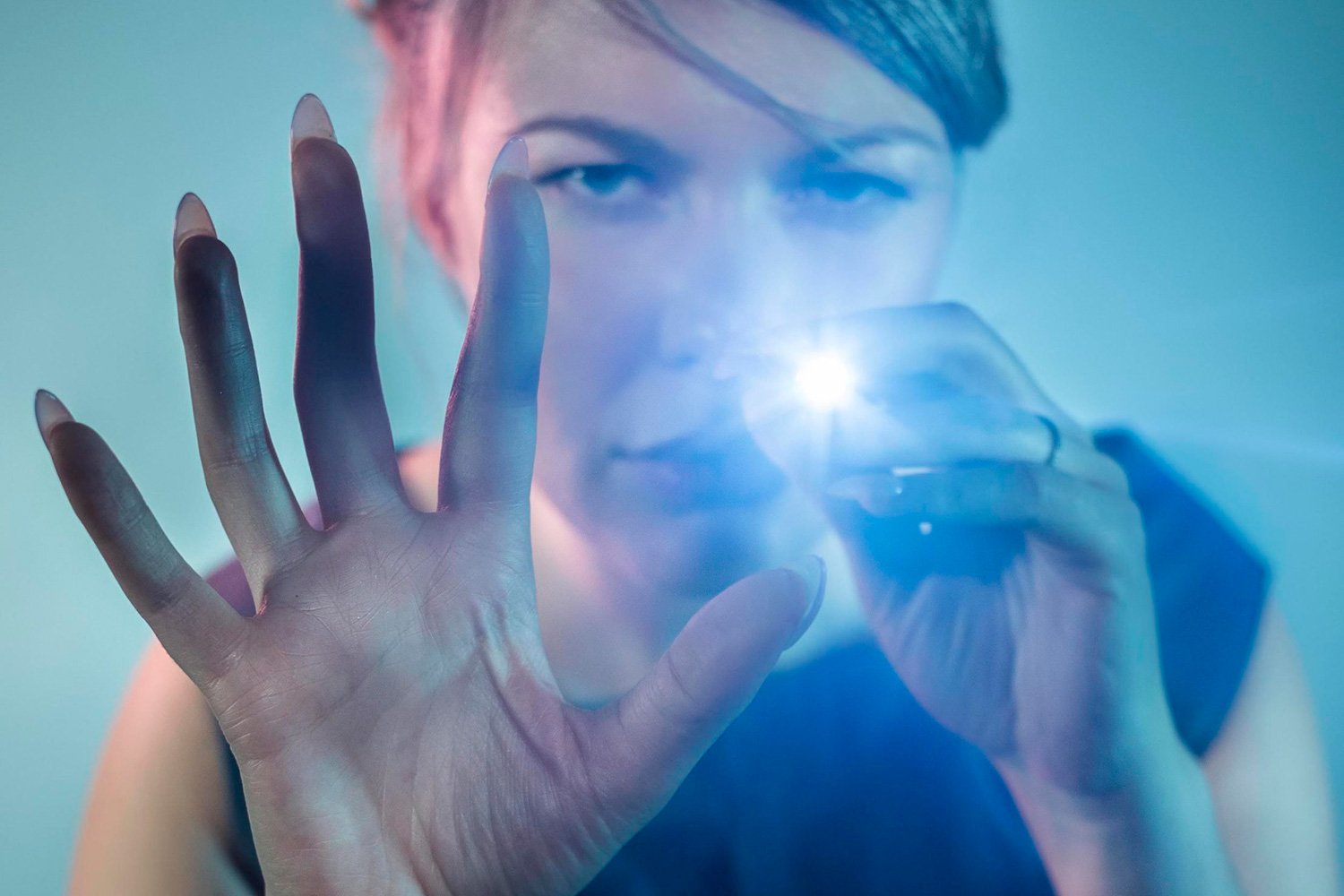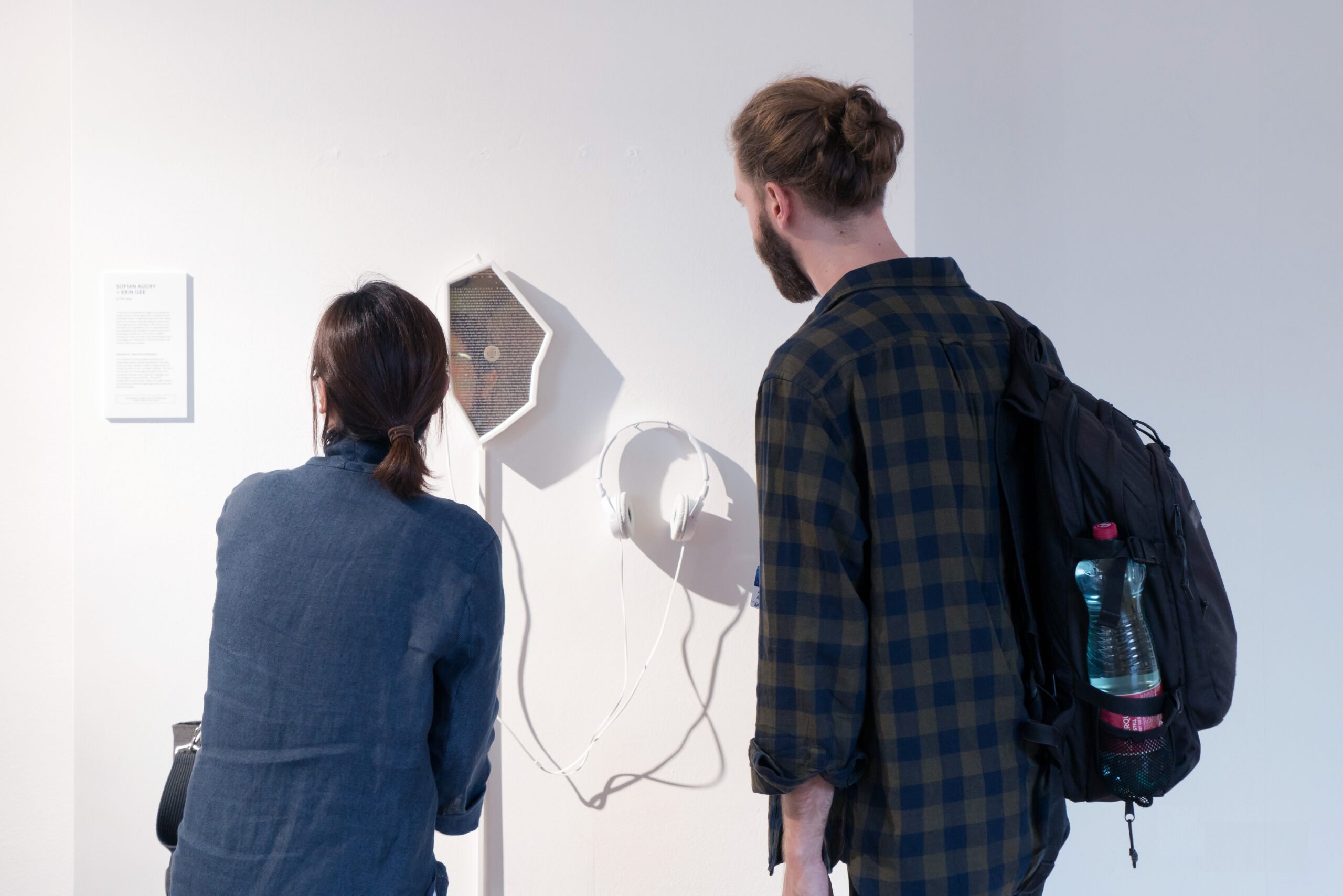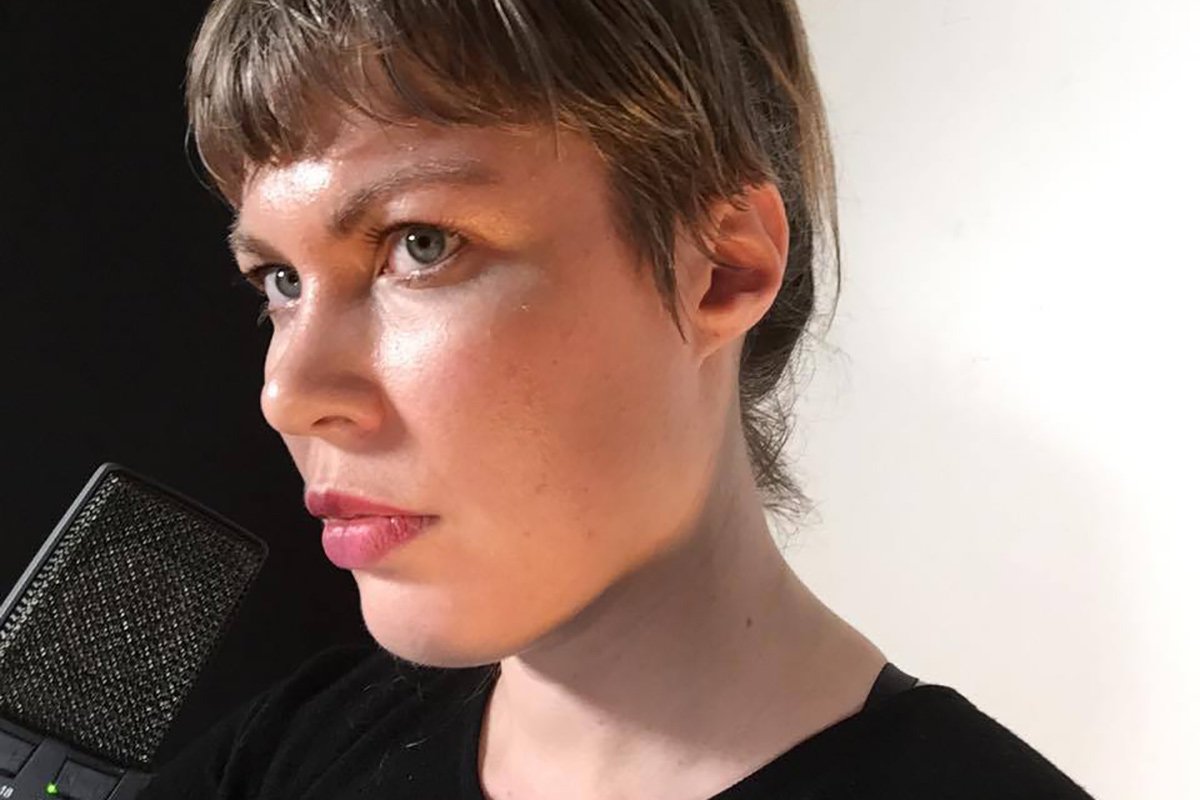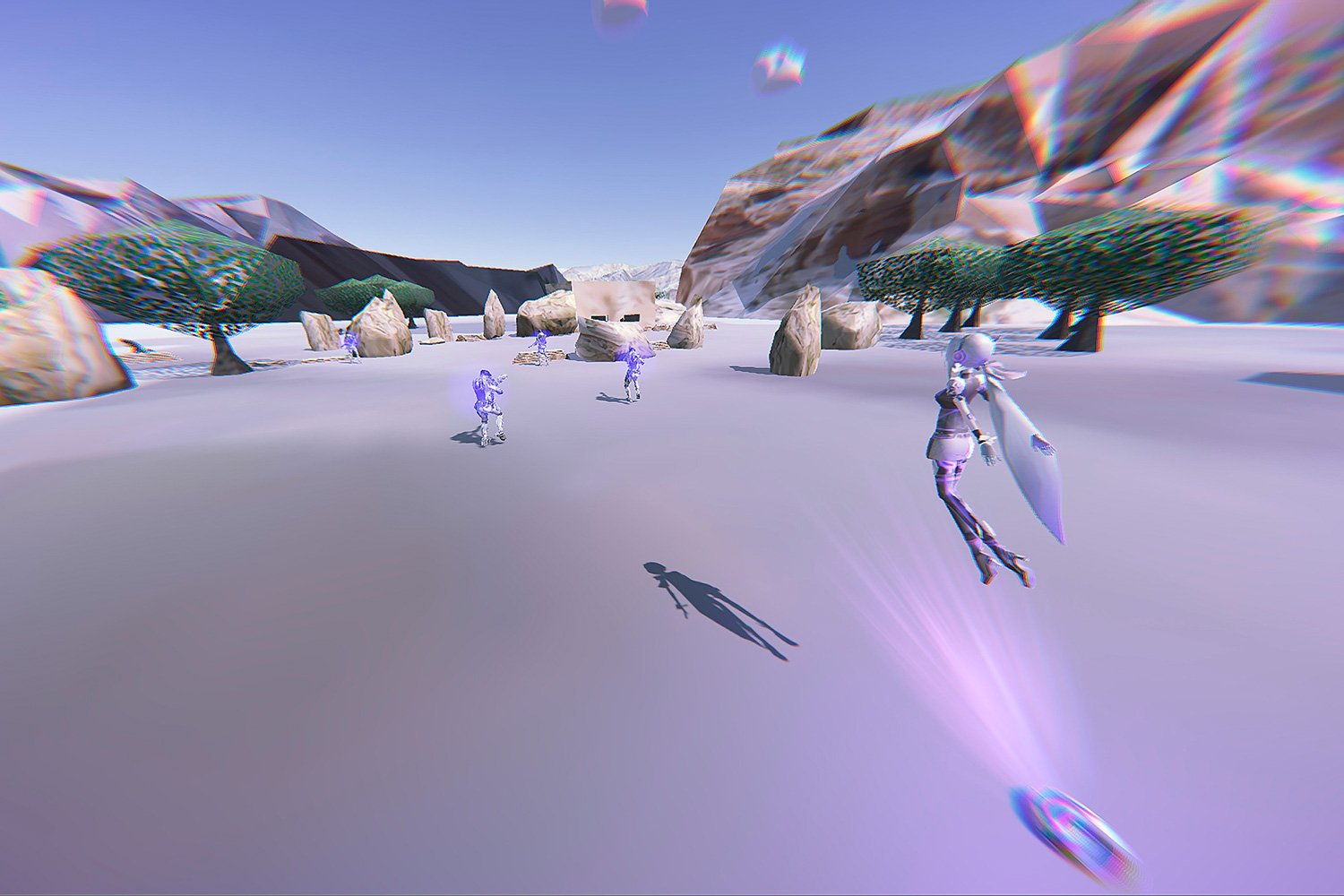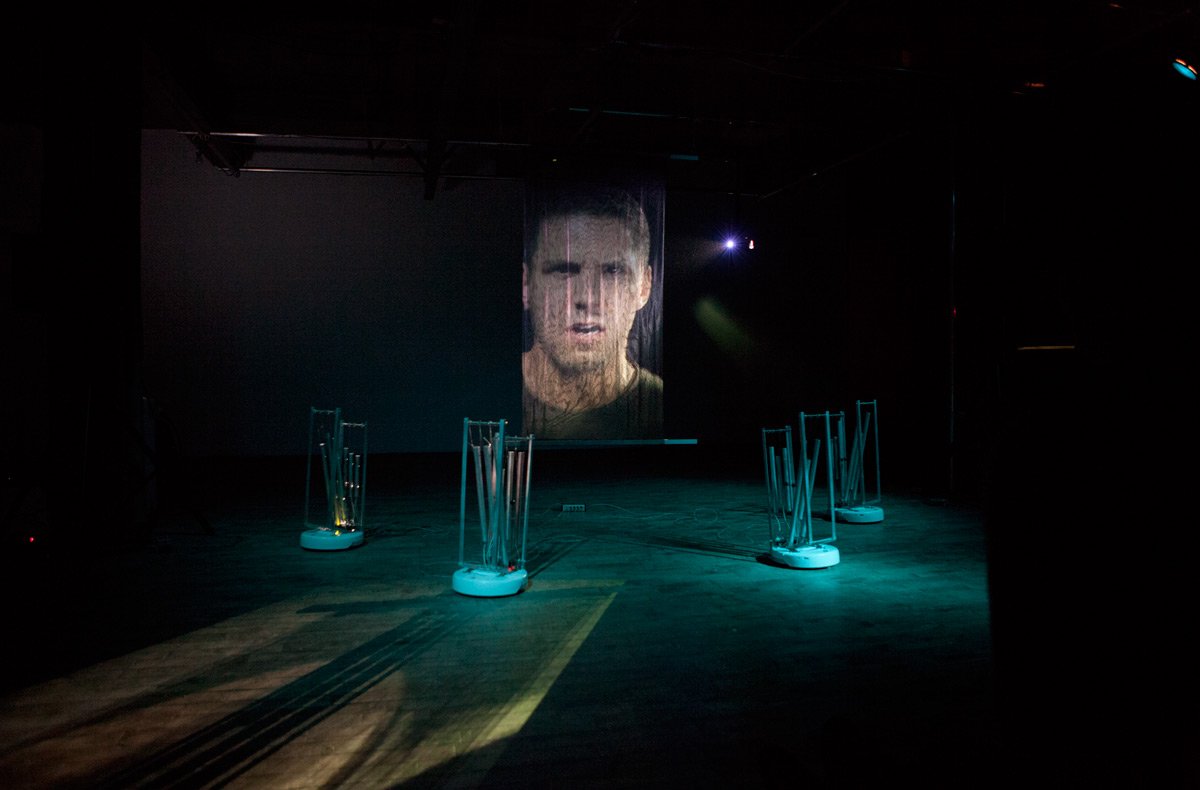Machine Unlearning
Vision calibration from Machine Unlearning (2020).
Photography by Elody Libe. Image courtesy of the artist.
2020
In Machine Unlearning, the artist greets the viewer and slowly offers them a unique neural conditioning “treatment”: sonically reproducing the unraveling outputs of an LSTM algorithm as it “unlearns” through whispering, moving backwards in time through its epochs of training.
This aural treatment is couched in a first-person roleplay scenario that grounds the viewer through a series of simple audio visual tests. At no point is the neural network technology “seen” – it is instead performed by a human interlocuter, translated into affective vocality and whispered text. The algorithm was created by media artist Sofian Audry, and trained on the text of Emily Brontë’s novel Wuthering Heights (1847). This novel was chosen in part because of its richly poetic syntax, but also for its feminine vocality and conceptual themes of love and intergenerational trauma. Machine Unlearning is a novel combination of neural network technologies and the popular internet genre “Autonomous Sensory Meridian Response,” or ASMR. ASMR is a social media genre that has developed largely through massive social media metrics in the form of upvotes, clicks, comments, subscribes, and likes in response to audio visual stimuli that creates feelings of mild euphoria, relaxation and pleasure. ASMR fans online seek out specific video content that causes the physiological reaction of “tingles” – tingling sensations across the skin, a mild body high, or simply a means of falling asleep. Gee considers ASMR as a form of psychosomatic body hacking. By combining machine learning with ASMR, Gee draws parallels between cutting edge autonomous/non-conscious algorithms and the autonomous/unconscious functions of the human body. Just as ASMRtists use specific sounds and visual patterns in their videos to “trigger” physical reactions in the viewer, machine learning algorithms also unconsciously respond to patterns perceived through limited senses in order to develop learning (and unlearning) results. The artist’s emphasis on whispering the textual outputs of the algorithm as it slowly “unlearns” allows the listener to grasp the materiality of machine learning processes at a human level, but also a subconscious level: allowing one’s body to be mildly and charmingly “hacked” through soft and gentle play.
The use of the word “intelligence” in the metaphor of AI focuses on higher functions of consciousness that algorithms do not possess. While algorithms have not meaningfully achieved a humanistic consciousness to date, today’s algorithms act autonomously on sensory information, processing data from its environment in unconscious, automatic ways. The human brain also responds unconsciously and automatically to sensory data in its environment, for example, even if you are not conscious of how hot a stove is, if you place your hand on a hot stove, your hand will automatically pull away. These unconscious, physiological actions in the sensory realm points to an area of common experience between algorithms and the human. For more explanation of these ideas, take a look at the work of postmodern literary critic N. Katherine Hayles in her 2017 book Unthought: The power of the cognitive nonconscious. In this way I wonder if the expression “autonomous intelligence” makes more sense than “artificial intelligence”, however like posthumanist feminist Rosi Braidotti I am deeply suspicious of the humanist pride that our species takes in the word “intelligence” as something that confers a special status and justification for domination of other forms of life on earth.
Credits
Photography and videography by Elody Libe.
Production Support: Machine Unlearning video installation was produced at Perte de Signal with the support of the MacKenzie Art Gallery for the exhibition To the Sooe (2020) curated by Tak Pham.
The roleplay performance was developed during my artistic residency at Locus Sonus – École Superieur d’art d’Aix en Provence and Laboratoire PRISM.
Custom LSTM Algorithm created by media artist Sofian Audry
Video
Machine Unlearning (2020)
Videography by Elody Libe
Gallery
This work was first developed as a performance that debuted at Cluster Festival, Winnipeg in 2019. During live performance, each audience member dons a pair of wireless headphones. The performance allows the audience members to see the ASMR “result” of the performance for camera, simultaneous with the ability to see my “backstage” manipulation of props and light in real time.


